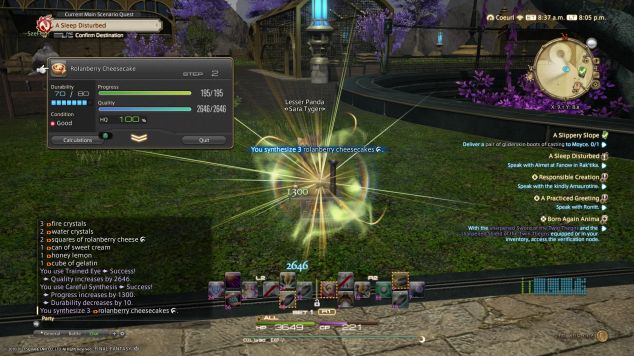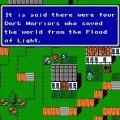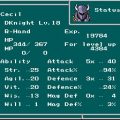Final Fantasy Retrospective: How Much Is A Gil Worth, Anyway?

I don’t think anyone is going to be surprised when I say the answer to this question is complicated.
If you spend any amount of time in Limsa Lominsa, Gridania or Ul’dah in Final Fantasy XIV, sooner or later you’ll see the shouts from bots hidden beneath the map. “Buy our gil! Best prices!” Players old and new can buy as much gil as they want from third party sellers, provided they can decipher the URL from the message (and it’s usually pretty easy to). This is against the game’s terms of service, of course, but it kind of begs the question: is there a way to figure out how much a gil should actually be worth?
The first time players had any kind of real world reference to compare gil to was in Final Fantasy: Mystic Quest. When Benjamin meets Tristam for the first time, Tristam asks for more money than he has and he protests. “My allowance is only 2GP a month!” Later on, the elderly sage guiding Benjamin asks if he has 10GP for coffee. But, old man, his allowance is only 2GP a month! (GP was the original translation for what we now call gil.)
Could it be as simple as that? 10 gil for a cup of coffee, then figure out the entire series’ exchange rate from there? The napkin math I provided in my Mystic Quest retrospective article suggested that if one coffee is 10 gil, then Benjamin’s allowance of 2 gil is only worth about forty cents. (That’s as many as four tens and that’s terrible.)
The closest we get to an actual real world value being assigned to gil is in volume one of Final Fantasy: Lost Stranger. On page 139, Shogo Sasaki speculates that, judging by the prices in the world he finds himself in after an accident, one gil is roughly equivalent to one yen. Honestly, that’s how I always thought of a gil. I also figured that, in American terms, a gil would be roughly equivalent to one cent. This checks out since 100 yen is currently worth 92 American cents.
But if that’s the case, then coffee is dirt cheap and poor Benjamin is only receiving two cents a month in allowance! Maybe in a year or so he’ll be able to put a quarter in a gumball machine.
The first thing that came to mind when trying to figure out this problem is that I should look for something that already has a real life value and go from there, but that’s easier said than done. Many items that are commonly used in Final Fantasy simply don’t have a real world equivalent, because they’re meant to solve problems that also don’t have real world equivalents, or are typically unsolvable in real life. The Phoenix is a mythical bird, so you can’t reasonably expect its down to raise the dead. People don’t get transformed into frogs, as far as I know, and I don’t know of any way you can bottle up the kiss of a maiden. And so on.
Even potions don’t cross over very well. It’s not easy to find information about the prices of the Final Fantasy drinks marketed by Suntory, but after doing some digging, I was able to find out that the original Potion beverage released to help promote Final Fantasy XII cost 191 yen each, with a 600 yen version that came with a trading card. So it stands to reason that all I need to do now is check and see how much a Potion is worth in the games, right?



Yeah… no. It’s very much easier said than done, since a Potion’s cost varies from game to game. Other items vary in price too, as can be seen above when comparing the cost of tents. One of the most egregious examples of how much the cost of something can vary between games comes when comparing the cost of Phoenix Down. They cost 5000 gil each in Final Fantasy II, but as can be seen above, cost only 150 gil in Final Fantasy IV, making them incredibly dirt cheap and putting them on par with that game’s Hi-Potions.
Since each game balances their items differently when it comes to price and effectiveness, it’d be hard to come up with an exchange rate between games. I suppose you could see what 191 yen is worth on a game by game basis, but some games also changed the price of a Potion when they were remade. And I bet you thought real life exchange rates were bad enough!
I do have some good news. We can, at least, try to figure out how much the gil of Final Fantasy XII is worth based on the Potion commercial, since after the two actors drink some, they regain 100 HP (Potions heal 100 HP in the game) and the healing effect shown is the one from the game. A Potion cost 70 gil in the original version, which means we’re left with an exchange rate of approximately 2.73 yen for 1 gil in the fabulous world of Ivalice during the time when the Archadian Empire has annexed the kingdom of Dalmasca. In American funds, that’s roughly two and a half cents per gil. Hopefully Vaan’s allowance is more than five cents per month.
Presumably, I should be able to check my work by comparing other items in the game with their real life worth. That, too, is easier said than done. A simple Leather Shield is worth 300 gil in Final Fantasy XII, which means one should cost no more than $7.50 in real life, right?
Yeah… no.
Granted, that’s a collector’s item I found and they might’ve been worth a lot less back in the 18th century, assuming they were plentiful in supply. This more elaborately decorated Viking shield is far more affordable but is still worth quite a bit. Perhaps in a society where there are a lot of enemies outside of your city’s walls to contend with, equipment like this is mass produced and thus isn’t all that expensive to acquire?
While it’s unfortunate that we’ve reached a dead end on Potions, there are other avenues of inquiry we can pursue. And what better way to determine how much gil is worth than by comparing how the games value real world commodities?
That said, very few of them actually price out the materials that make up a player’s equipment, but a few games in the series do feature a crafting system, most notably the two MMOs. Final Fantasy XIV‘s crafting system is perfect for this little experiment of ours. Our world might be a place where most weapons and armour are for decorative, ceremonial or cosplay purposes, but we share one major similarity with the world of Eorzea: the materials used to craft things in the game are plentiful enough in our world that the price of these goods shouldn’t vary too much. We can potentially figure out how much an Eorzean gil is worth and actually have that value carry over into the equipment players wear when starting out their quests, depending on our findings.
A good place to start might be the Bronze Ingots that many vendors supply. At 9 gil each, they’re a very cheap material to work with and can be used in a number of beginner recipes, from swords and daggers to shields and gauntlets.
The recipe for a Bronze Bastard Sword calls for one Bronze Ingot, and an online tutorial I found for making a bronze sword calls for about a kilogram of bronze, so I’m going to assume that one kilogram is the approximate weight of an ingot in Eorzea.
The price of a kilogram of bronze seems to vary depending on the vendor, but I found one that was selling it for $7.50, American. An ingot of copper costs the same as bronze both in the game (9 gil) and from the real life vendor ($7.50), so it’s beginning to look like this is the baseline for the worth of Eorzean gil. Using what I found, I calculated one gil to be worth about 83 cents.
Do I dare to check my work and risk nullifying my findings again? I mean, this is how I make sure I’m on the right track, so I guess so. Iron Ingots can be purchased from very few vendors in the game but the ones that do offer them sell them for 68 gil, so that would translate to prices ranging from $55 to $60 per kilogram in real life.
Turns out, iron is a very cheap metal to acquire, going for half a dollar per kilogram at most.
In re-playing the older Final Fantasy titles, I’ve been coming to appreciate just how balanced the games are, often making sure players have just enough money to upgrade everyone’s weapons and armour by the time they reach the next town. Granted, everything’s more expensive as you go, and there’s always a hierarchy of materials (Bronze being basic gear, Iron being stronger then Bronze, Mythril being stronger than Iron, Gold somehow being stronger than Mythril, and so on). It doesn’t help that Mythril is a fictional metal that originated in the Lord of the Rings novels and thus would be exceptionally hard to price out in real life. Unfortunately, this hierarchy of materials doesn’t take into account how much those materials would be worth in real life.
From my findings, I’ve drawn two conclusions. It can be assumed that iron is more valuable in Eorzea than it is on Earth, and it can also be assumed that gil doesn’t always translate perfectly into dollars, at least not with one uniform exchange rate across all commodities. Unfortunately, some materials are worth a lot more in Eorzea than they are on Earth, and some materials are worth a lot less.
Looking at the food available in the game throws another monkey wrench into the calculations. A chicken breast in Eorzea costs 58 gil, and that had better be a massive portion of meat for it to be worth $48.33. I can buy one for about $3 (Canadian Dollars) here. Once translated to American Dollars ($2.40), it gives us a different estimate of one gil equaling roughly four cents. A chicken egg (5 gil) ends up being worth 20 cents, an onion (7 gil) worth 28 cents. Your basic tomato (16 gil) costs 64 cents.

So where does this leave us when figuring out how much each gil is worth in real world money? Unfortunately, it doesn’t allow us to find a definitive and satisfying answer. Food in Final Fantasy XIV may be a system wholly and completely separate from other crafting material, and one Final Fantasy might not carry over the same exchange rate as the next. Maybe one day there will be a detailed system of exchanges that takes into account the different games as well as the different types of materials in the MMOs. Unfortunately, that day is not today.





